Non-steroidal anti-inflammatory agents for treating cystoid macular edema following cataract surgery
- PMID: 36520144
- PMCID: PMC9754896
- DOI: 10.1002/14651858.CD004239.pub4
Non-steroidal anti-inflammatory agents for treating cystoid macular edema following cataract surgery
Abstract
Background: Cataract surgery is the most common ambulatory incisional surgery performed in the USA. Cystoid macular edema (CME), the accumulation of fluid in the central retina due to leakage from dilated capillaries, is the most common cause of vision impairment following cataract surgery. Acute CME, defined as CME of less than four months' duration, often resolves spontaneously. CME that persists for four months or longer is termed chronic CME. Non-steroidal anti-inflammatory drugs (NSAIDs) have been used to treat CME. This update adds new evidence and analyses to the previously published review.
Objectives: To examine the effectiveness of NSAIDs in the treatment of CME following cataract surgery.
Search methods: We searched the CENTRAL (2022, Issue 3); Ovid MEDLINE; Embase; PubMed; LILACS; mRCT (discontinued in 2014, last searched August 2011), ClinicalTrials.gov, and WHO ICTRP databases. We did not use any date or language restrictions in the electronic search for trials. We last searched the electronic databases on 20 March 2022. SELECTION CRITERIA: We included randomized controlled trials evaluating the effects of NSAIDs for CME following cataract surgery.
Data collection and analysis: Two review authors independently screened all titles and abstracts, reviewed full-text publications against eligibility criteria, independently extracted data from newly included trials and assessed risk of bias for each included trial. We contacted trial authors for clarification or to request missing information. We provided a narrative synthesis of all included trials and their results. For continuous and dichotomous outcomes, we separately performed pooled analysis and reported mean difference (MD) and risk ratio (RR) as well as the associated 95% confidence interval (CI) whenever feasible. Two review authors independently graded the overall certainty of the evidence for each outcome using the GRADE approach.
Main results: We included nine trials with a total of 390 participants (393 eyes). Study participants' mean age was 72.2 years (interquartile range [IQR] 68.8 to 73.6) and 72% were women (IQR 69% to 74%). Three trials included participants with acute CME, and four included participants with chronic CME; the remaining two trials enrolled both participants with acute and chronic CME or participants with unknown CME duration. We assessed trials as having unclear (33%) or high risk of bias (67%). Visual improvement of two or more lines at the end of treatment Data from one trial in participants with acute CME show no treatment effect of topical ketorolac compared to placebo (RR 2.00, 95% CI 0.46 to 8.76; 22 participants). Data from a three-arm trial in participants with acute CME demonstrate that, when compared with topical prednisolone, topical ketorolac (RR 1.33, 95% CI 0.58 to 3.07; 17 participants) or topical ketorolac and prednisolone combination therapy (RR 1.78, 95% CI 0.86 to 3.69; 17 participants) may have little or no effect on visual improvement. Results of subgroup analysis from two studies in participants with chronic CME suggest that, after treatment for 90 days or longer, NSAIDs may increase participants' likelihood of visual improvement by 1.87 fold (RR 2.87, 95% CI 1.58 to 5.22; I2 = 33%; 2 trials, 121 participants) relative to placebo. However, there was no evidence of treatment effects in the subgroup with two months of treatment or less (RR 0.72, 95% CI 0.30 to 1.73; P = 0.19, I2 = 41%; 2 trials, 34 participants). Overall, this evidence is very low certainty. A single-study estimate in patients with mixed CME indicates that topical diclofenac may increase the likelihood of visual improvement by 40% when compared to topical ketorolac (RR 1.40, 95% CI 1.02 to 1.94; 68 participants). However, the same trial reported no difference between the groups in mean final visual acuity in Snellen lines (MD 0.40, 95% CI -0.93 to 1.73). A three-arm trial in patients with mixed CME reporting visual changes in ETDRS letters in comparisons between ketorolac and diclofenac (34 participants) or bromfenac (34 participants) suggests no evidence of effects. Overall, NSAIDs may slightly improve visual acuity in participants with mixed CME but the evidence is very uncertain. Persistence of improvement of vision one month after discontinuation of treatment One trial of participants with chronic CME tested oral indomethacin (RR 0.40, 95% CI 0.10 to 1.60; 20 participants) and the other compared topical ketorolac to placebo (RR 4.00, 95% CI 0.51 to 31.1; 26 participants). While there is no evidence of treatment effects, evidence suggests substantial between-group heterogeneity (P = 0.07, I2 = 69.9%; very low-certainty evidence). None of the trials in patients with acute or mixed CME reported this outcome. Proportion of participants with improvement in leakage on fundus fluorescein angiography One three-arm trial in participants with acute CME shows that, when compared with topical prednisolone, there is no treatment benefit of topical ketorolac (RR 1.11, 95% CI 0.45 to 2.75; 17 participants) or topical ketorolac and topical prednisolone combination therapy (RR 1.56, 95% CI 0.72 to 3.38; 17 participants). This evidence is very low certainty. The combined estimate from two trials in participants with chronic CME indicates NSAIDs have little to no effect over placebo on improving leakage (RR 1.93, 95% CI 0.62 to 6.02; 40 participants; very low-certainty evidence). Neither of the trials in patients with mixed CME reported this outcome. Proportion of participants with improved contrast sensitivity Very low-certainty evidence from one trial in participants with acute CME shows no treatment benefit of ketorolac (RR 1.11, 95% CI 0.45 to 2.75; 17 participants) or ketorolac and prednisolone combination therapy (RR 1.78, 95% CI 0.86 to 3.69; 17 participants) compared with topical prednisolone. None of the trials in patients with chronic or mixed CME reported this outcome. Proportion of participants with improved central macular thickness on optical coherence tomography; measures of quality of life No included trial reported these outcomes. Adverse effects Most trials observed no differences in ocular adverse events, such as corneal toxicity or elevated intraocular pressure, between comparison groups.
Authors' conclusions: Evidence on effects of NSAIDs in patients with CME is very uncertain and further investigation is warranted. Our findings are limited by small sample sizes, and heterogeneity in interventions, assessments, and reporting of clinically important outcomes.
Copyright © 2022 The Cochrane Collaboration. Published by John Wiley & Sons, Ltd.
Conflict of interest statement
Andreas Wingert: none Su‐Hsun Liu: reports a grant from the National Eye Institute, National Institutes of Health, USA; payment to institution John Lin: none Jayanth Sridhar: consultant for Alcon, Genentech, DORC, Regeneron, and Apellis
Figures
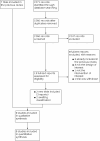


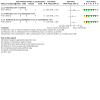
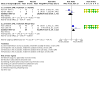
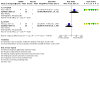
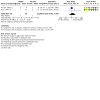
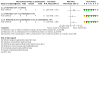
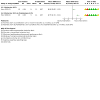
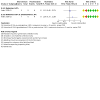

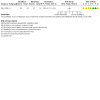
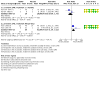




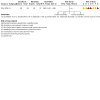


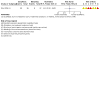
Update of
-
Non-steroidal anti-inflammatory agents for treating cystoid macular oedema following cataract surgery.Cochrane Database Syst Rev. 2012 Feb 15;(2):CD004239. doi: 10.1002/14651858.CD004239.pub3. Cochrane Database Syst Rev. 2012. Update in: Cochrane Database Syst Rev. 2022 Dec 15;12:CD004239. doi: 10.1002/14651858.CD004239.pub4. PMID: 22336801 Updated.
References
References to studies included in this review
Burnett 1983 {published data only}
-
- Burnett J, Tessler H, Isenberg S, Tso MO. Double-masked trial of fenoprofen sodium: treatment of chronic aphakic cystoid macular edema. Ophthalmic Surgery 1983;14(2):150-2. - PubMed
Flach 1987 {published data only}
-
- Flach AJ, Dolan BJ, Irvine AR. Effectiveness of ketorolac tromethamine 0.5% ophthalmic solution for chronic aphakic and pseudophakic cystoid macular edema. American Journal of Ophthalmology 1987;103(4):479-86. - PubMed
Flach 1991 {published data only}
-
- Flach AJ, Jampol LM, Weinberg D, Kraff MC, Yannuzzi LA, Campo RV, et al. Improvement in visual acuity in chronic aphakic and pseudophakic cystoid macular edema after treatment with topical 0.5% ketorolac tromethamine. American Journal of Ophthalmology 1991;112(5):514-9. - PubMed
-
- Flach AJ. Visual improvement in patients with chronic aphakic and pseudophakic cystoid macular edema (ACME) following a topically applied cyclooxygenase inhibitor (COI)-ketorolac tromethamine 0.5% ophthalmic solution. Report of a multi-center study. Investigative Ophthalmology & Visual Science 1991;32:ARVO abstract 91.
Flach 1998 {published and unpublished data}
Heier 2000 {published data only}
-
- Heier JS, Topping TM, Baumann W, Dirks MS, Chern S, Flach AJ. Ketorolac versus prednisolone versus combination therapy in the treatment of acute pseudophakic cystoid macular edema. Ophthalmology 2000;107(11):2034-9. - PubMed
Rho 2003 {published data only}
-
- Rho DS. Treatment of acute pseudophakic cystoid macular edema: diclofenac versus ketorolac. Journal of Cataract and Refractive Surgery 2003;29(12):2378-84. - PubMed
Rho 2004 {published data only}
-
- Rho DS, Soll SM. Combination therapy for pseudophakic cystoid macular edema: diclofenac sodium 0.1% and prednisolone acetate 1% versus ketorolac tromethamine 0.5% and prednisolone acetate 1%. Investigative Ophthalmology & Visual Science 2004;45:ARVO E‐abstract 2030.
-
- Rho DS, Soll SM. Combination therapy for pseudophakic cystoid macular edema: diclofenac sodium 0.1% and prednisolone acetate 1% vs. ketorolac tromethamine 0.5% and prednisolone acetate 1%. American Academy of Ophthalmology 2004:AAO-PO-201.
Rho 2006 {published data only}
-
- Rho DS, Soll SM, Markovitz BJ. Bromfenac 0.09% versus diclofenac sodium 0.1% versus ketorolac tromethamine 0.5% in the treatment of acute pseudophakic cystoid macular edema. Investigative Ophthalmology & Visual Science 2006;47:ARVO E‐abstract 5211.
Yannuzzi 1977 {published data only}
-
- Yannuzzi LA, Klein RM, Wallyn RH, Cohen N, Katiz I. Ineffectiveness of indomethacin in the treatment of chronic cystoid macular edema. American Journal of Ophthalmology 1977;84(4):517-9. - PubMed
References to studies excluded from this review
Aaronson 2020 {published data only}
Ahluwalia 1988 {published data only}
-
- Ahluwalia BK, Kalra SC, Parmar IP, Khurana AK. A comparative study of the effect of antiprostaglandins and steroids on aphakic cystoid macular oedema. Indian Journal of Ophthalmology 1988;36(4):176-8. - PubMed
Asano 2008 {published data only}
-
- Asano S, Miyake K, Ota I, Sugita G, Kimura W, Sakka Y, et al. Reducing angiographic cystoid macular edema and blood-aqueous barrier disruption after small incision phacoemulsification and foldable intraocular lens implantation: multicenter prospective randomized comparison of topical diclofenac 0.1% and betamethasone 0.1%. Journal of Cataract and Refractive Surgery 2008;34(1):57-63. - PubMed
Azzolini 1986 {published data only}
-
- Azzolini C, Bressan P, Dorigo MT. Medical treatment of cystoid macular oedema in aphakia patients. Minerva Oftalmologica 1986;28(1):15-20.
Ginsburg 1994 {published data only}
-
- Ginsburg AP, Cheetham JK, DeGryse RE, Abelson M. The effects of flurbiprofen and indomethacin on acute cystoid macular edema: functional vision and contrast sensitivity. Investigative Ophthalmology & Visual Science 1994;35:Abstract number 1153.
IDSG 1997 {published data only}
-
- Italian Diclofenac Study Group. Efficacy of diclofenac eyedrops in preventing postoperative inflammation and long-term cystoid macular edema. Journal of Cataract and Refractive Surgery 1997;23(8):1183-9. - PubMed
Jampol 1994 {published data only}
-
- Jampol LM, Jain S, Pudzisz B, Weinreb RN. Nonsteroidal anti-inflammatory drugs and cataract surgery. Archives of Ophthalmology 1994;112(7):891-4. - PubMed
Kraff 1985 {published data only}
-
- Kraff MC, Sanders DR, Jampol LM, Lieberman HL. Factors affecting pseudophakic cystoid macular edema: five randomized trials. American Intra-Ocular Implant Society Journal 1985;11:380-5. - PubMed
Mathys 2010 {published data only}
-
- Mathys KC, Cohen KL. Impact of nepafenac 0.1% on macular thickness and postoperative visual acuity after cataract surgery in patients at low risk for cystoid macular oedema. Eye 2010;24(1):90–6. - PubMed
Miyake 1995 {published data only}
-
- Miyake K. Nonsteroidal anti-inflammatory agents in cataract intraocular lens surgery. Current Opinion of Ophthalmology 1995;6(1):62-5. - PubMed
Miyake 2007 {published data only}
-
- Miyake K, Nishimura K, Harino S, Ota I, Asano S, Kondo N, et al. The effect of topical diclofenac on choroidal blood flow in early postoperative pseudophakias with regard to cystoid macular edema formation. Investigative Ophthalmology and Visual Science 2007;48(12):5647–52. - PubMed
NCT00438243 {published data only}
-
- NCT00438243. Pilot study of the effect of topical bromfenac ophthalmic solution 0.09%in patients with acute post-operative cystoid macular edema. ClinicalTrials.gov/show/NCT00438243 (first received 22 February 2007).
NCT01769352 {published data only}
-
- NCT01769352. Treatment of post-surgical cystoid macular edema with topical steroids trial (TEMPEST-1). ClinicalTrials.gov/show/NCT01769352 (first received 16 January 2013).
Rossetti 1996 {published data only}
-
- Rossetti L, Bujtar E, Castoldi D, Torrazza C, Orzalesi N. Effectiveness of diclofenac eyedrops in reducing inflammation and the incidence of cystoid macular edema after cataract surgery. Journal of Cataract and Refractive Surgery 1996;22 Suppl 1:794-9. - PubMed
Singal 2004 {published data only}
-
- Singal N, Hopkins J. Pseudophakic cystoid macular edema: ketorolac alone vs. ketorolac plus prednisolone. Canadian Journal of Ophthalmology 2004;39(3):245-50. - PubMed
Stark 1984 {published data only}
-
- Stark WJ Jr, Maumenee AE, Fagadau W, Datiles M, Baker CC, Worthen D, et al. Cystoid macular edema in pseudophakia. Survey of Ophthalmology 1984;28 Suppl:442-51. - PubMed
Warren 2010 {published data only}
-
- Warren KA, Bahrani H, Fox JE. NSAIDS in combination therapy for the chronic pseudophakic cystoid macular edema. Retina 2010;30(2):260–6. - PubMed
Wolfensberger 1999 {published data only}
-
- Wolfensberger TJ, Herbort CP. Treatment of cystoid macular edema with non-steroidal anti-inflammatory drugs and corticosteroids. Documenta Ophthalmologica. Advances in Ophthalmology 1999;97(3-4):381-6. - PubMed
References to studies awaiting assessment
NCT00595543 {published data only (unpublished sought but not used)}
-
- NCT00595543. Treatment of acute pseudophakic cystoid macular edema: bromfenac 0.09% versus diclofenac sodium 0.1% versus ketorolac tromethamine 0.5%. Clinicaltrials.gov/show/NCT00595543 (first received 16 January 2008).
Yüksel 2017 {published data only}
-
- Yüksel B, Uzunel UD, Kerci SG, Sağban L, Küsbeci T, Örsel T. Comparison of subtenon triamcinolone acetonide injection with topical nepafenac for the treatment of pseudophakic cystoid macular edema. Ocular Immunology and Inflammation 2017;25(4):513‐19. - PubMed
Additional references
Begg 1996
-
- Begg C, Cho M, Eastwood S, Horton R, Moher D, Olkin I, et al. Improving the quality of reporting of randomized controlled trials. The CONSORT statement. JAMA 1996;276:637-9. - PubMed
Brandsdorfer 2019
-
- Brandsdorfer A, Patel SH, Chuck RS. The role of perioperative nonsteroidal anti-inflammatory drugs use in cataract surgery. Current Opinion in Ophthalmology 2019;30(1):44-9. - PubMed
Covidence [Computer program]
-
- Covidence. Version accessed 18 April 2022. Melbourne, Australia: Veritas Health Innovation. Available at covidence.org.
Davis 2016
Deeks 2022
-
- Deeks JJ, Higgins JP, Altman DG editor(s). Chapter 10: Analysing data and undertaking meta-analyses. In: Higgins JP, Thomas J, Chandler J, Cumpston M, Li T, Page MJ, Welch VA editor(s). Cochrane Handbook for Systematic Reviews of Interventions Version 6.3 (updated February 2022). Cochrane, 2022. Available from www.training.cochrane.org/handbook.
Fichman 1996
-
- Fichman RA. Use of topical anesthesia alone in cataract surgery. Journal of Cataract and Refractive Surgery 1996;22(5):612-4. - PubMed
Fujimoto 2016
Gass 1966
-
- Gass JD, Norton EW. Cystoid macular edema and papilledema following cataract extraction: a fluorescein fundoscopic and angiographic study. Archives of Ophthalmology 1966;76(5):646-61. - PubMed
Glanville 2006
Grzybowski 2016
Hays 2001
-
- Hays RD, Morales LS. The RAND-36 measure of health-related quality of life. Annals of Medicine 2001;33:350-7. - PubMed
Henderson 2007
-
- Henderson BA, Kim JY, Ament CS, Ferrufino-Ponce ZK, Grabowska A, Cremers SL. Clinical pseudophakic cystoid macular edema: risk factors for development and duration after treatment. Journal of Cataract and Refractive Surgery 2007;33(9):1550-8. - PubMed
Higgins 2002
-
- Higgins JP, Thompson SG. Quantifying heterogeneity in a meta-analysis. Statistics in Medicine 2002;21(11):1539-58. - PubMed
Higgins 2011
-
- Higgins JP, Altman DG, Sterne JA, editor(s). Chapter 8: Assessing risk of bias in included studies. In: Higgins JP, Green S editor(s). Cochrane Handbook for Systematic Reviews of Interventions Version 5.1.0 (updated March 2011). The Cochrane Collaboration, 2011. Available from training.cochrane.org/handbook/archive/v5.1/.
Irvine 1953
-
- Irvine SR. A newly defined vitreous syndrome following cataract surgery. American Journal of Ophthalmology 1953;36(5):599-619. - PubMed
Kessel 2014
-
- Kessel L, Tendal B, Jørgensen KJ, Erngaard D, Flesner P, Andresen JL, et al. Post-cataract prevention of inflammation and macular edema by steroid and nonsteroidal anti-inflammatory eye drops: a systematic review. Ophthalmology 2014;121(10):1915-24. - PubMed
Kim 2015
-
- Kim SJ, Schoenberger SD, Thorne JE, Ehlers JP, Yeh S, Bakri SJ. Topical nonsteroidal anti-inflammatory drugs and cataract surgery: a report by the American Academy of Ophthalmology. Ophthalmology 2015;122(11):2159-68. - PubMed
Malwankar 2022
-
- Malwankar J, Son HS, Chang DF, Dun C, Woreta F, Prescott C, et al. Trends, factors, and outcomes associated with immediate sequential bilateral cataract surgery among Medicare beneficiaries. Ophthalmology 2022;129(5):478-87. - PubMed
Mangione 2001
-
- Mangione CM, Lee PP, Gutierrez PR, Spritzer K, Berry S, Hays RD, et al. Development of the 25-item National Eye Institute Visual Function Questionnaire. Archives of Ophthalmology 2001;119(7):1050-8. - PubMed
McKenzie 2022
-
- McKenzie JE, Brennan SE, Ryan RE, Thomson HJ, Johnston RV. Chapter 9: Summarizing study characteristics and preparing for synthesis. In: Higgins JP, Thomas J, Chandler J, Cumpston M, Li T, Page MJ, Welch VA editor(s). Cochrane Handbook for Systematic Reviews of Interventions Version 6.3 (updated February 2022). Cochrane, 2022. Available from www.training.cochrane.org/handbook.
Miyake 2002
-
- Miyake K, Ibaraki N. Prostaglandins and cystoid macular edema. Survey of Ophthalmology 2002;47 Suppl 1:S203-18. - PubMed
Orski 2021
Perente 2007
-
- Perente I, Utine CA, Ozturker C, Cakir M, Kaya V, Eren H, et al. Evaluation of macular changes after uncomplicated phacoemulsification surgery by optical coherence tomography. Current Eye Research 2007;32(3):241-7. - PubMed
RevMan Web 2022 [Computer program]
-
- Review Manager Web (RevMan Web). Version 4.13.0. The Cochrane Collaboration, 2022. Available at revman.cochrane.org.
Schünemann 2013
-
- Schünemann H, Brożek J, Guyatt G, Oxman A, editor(s). Handbook for grading the quality of evidence and the strength of recommendations using the GRADE approach (updated October 2013). GRADE Working Group, 2013. Available from gdt.guidelinedevelopment.org/app/handbook/handbook.html.
Schünemann 2022a
-
- Schünemann HJ, Higgins JP, Vist GE, Glasziou P, Akl EA, Skoetz N, et al. Chapter 14: Completing ‘Summary of findings’ tables and grading the certainty of the evidence. In: Higgins JP, Thomas J, Chandler J, Cumpston M, Li T, Page MJ, Welch VA editor(s). Cochrane Handbook for Systematic Reviews of Interventions Version 6.3 (updated February 2022). Cochrane, 2022. Available from www.training.cochrane.org/handbook.
Schünemann 2022b
-
- Schünemann HJ, Neumann I, Hultcrantz M, Brignardello-Petersen R, ZengL, Murad MH, et al, for the GRADE Working Group. GRADE Guidance article 35: Update on rating imprecision for assessing contextualized certainty of evidence and making decisions. Journal of Clinical Epidemiology (in press). [DOI: ] - PubMed
Shelsta 2010
-
- Shelsta HN, Jampol LM. Pharmacologic therapy of pseudophakic cystoid macular edema: 2010 update. Retina 2011;31(1):4-12. - PubMed
Steiner 2014
-
- Steiner CA, Karaca Z, Moore BJ, Imshaug MC, Pickens G. Surgeries in hospital-based ambulatory surgery and hospital inpatient settings, 2014. 2017 May [Updated 2020 Jul 20]. Healthcare Cost and Utilization Project (HCUP) Statistical Briefs [Internet]. Rockville (MD): Agency for Healthcare Research and Quality (US); 2006 Feb. Statistical Brief #223. Available from www.ncbi.nlm.nih.gov/books/NBK442035/ (accessed after July 2020). - PubMed
Taipale 2019
-
- Taipale C, Holmström EJ, Ilveskoski L, Tuuminen R. Incidence of pseudophakic cystoid macular edema in eyes with and without pupil expansion device. Acta Ophthalmologica 2019;97(7):688-94. - PubMed
References to other published versions of this review
Sivaprasad 2001
Sivaprasad 2004
Sivaprasad 2009
Publication types
MeSH terms
Substances
Grants and funding
LinkOut - more resources
Full Text Sources
Medical

